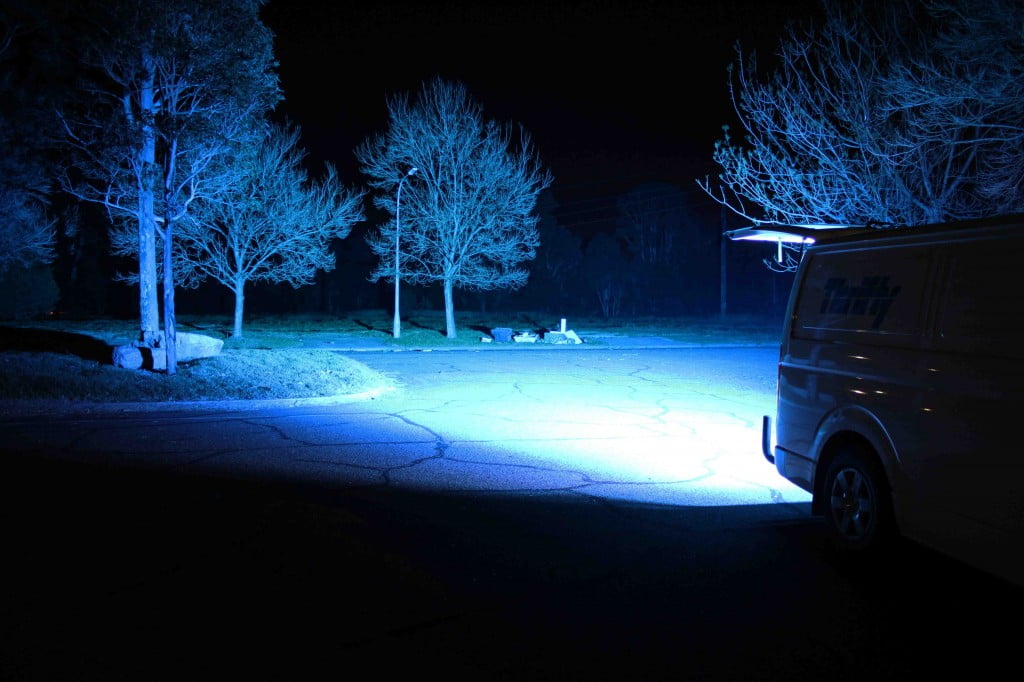Temporary Democracies artists Lachlan Anthony and Benjamin Forster first visited the Housing Estate of Airds in 2013. They were immediately struck by the evening quiet and the seemingly unremarkable architecture and ghostly street-scapes. The work they developed in response is a mobile lighting installation entitled Suburban Monument. Lachlan describes it an illumination of suburban space as a tribute or monument to houseless horizons, and empty streets, abandoned shop facers and vandalised play equipment. The idea was informed by the concept of Defensible Space Theory – an idea developed by architect and city planner Oscar Newman from New York in the 70s.
As defined in Newman’s book Design Guidelines for Creating Defensible Space, defensible space is “a residential environment whose physical characteristics—building layout and site plan—function to allow inhabitants themselves to become key agents in ensuring their security.” In a similar vein to the other imported American idea of the Radburn Urban Plan on which the Airds Housing estate was modelled, the success of the design pivots on the back on residential governance.
Now as the estate is erased and the landscape flattened to make way for new private dwellings, the installation illuminates a series of urban sites that are considered as monuments to a failed social design. However, rather than being a didactic imposition of light on the neighbourhood, both the artists engaged with residents about what colour they would prefer on their sites, and together with testing the lights on different surfaces, settled on the colours blue and magenta across 4 different sites in Airds.
You can check out the installation at Riverside Drive Precinct & Kevin Wheatley Memorial Reserve playground on the following dates: 3, 4 & 10, 11 October, 7.30-10.30pm

